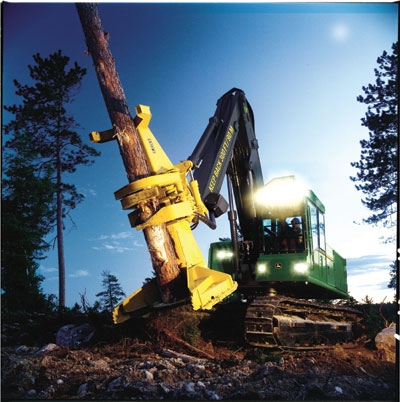
New Gear
Harvesting
New Gear
Buying with Safety in Mind
Safety First” is often heard on the jobsite, but is it considered first when buying or leasing equipment? In an effort to keep equipment costs down, it is simple to see how safety could be missing from the checklist.
November 9, 2011 By Pedro Negrin and Bill Pyles
 Safety First” is often heard on the jobsite
Safety First” is often heard on the jobsiteThinking outside tangible expenses, additional safety features may prevent: on-the-job injuries, lost time, payout for worker’s compensation and harmful media coverage. Ensuring that equipment is safe may be even more important than its quality and capabilities.
Not All _______ Are Created Equal
Fill in the blank with the next piece of equipment needed – loaders, excavators, cranes, attachments. Not all equipment is created equal. Therefore, safety features will vary among models and manufacturers. Additional safety risks can arise in buying used machines, mainly concerning if all the safety features are intact and functioning properly.
Here are practical ways to keep safety top of mind when looking to purchase that next piece of equipment.
Buyer’s Guide: Safety Checklist
Some of the must-have safety items are simple. Does the horn work? How about the lights? Are the brakes good? But some items require more than a quick glance and a kicking of the tires.
- Rollover Protection – The first component to examine and verify is the rollover protection structure, or the ROPS. The integrity of the system is paramount. Ensure that it hasn’t been welded or drilled. A strong ROPS, combined with seatbelt use, is highly effective in preventing fatalities and serious injury in the event of a rollover.
- Seatbelts – Check the expiration date on the seatbelts. Belts should be changed out every two years, especially if the piece of equipment has an open cab that exposes the belts to the elements and rots them out.
- Travel Alarm – Does the travel alarm work? Bring someone along to test drive it before purchasing. The alarm should sound when all machines are moving backwards. Excavators should have a travel alarm for movement in all directions. Consider it an added bonus if the equipment has backup video cameras.
- Proper Startup – A machine should only start in neutral, or park if an available option. If it does start in anything other than this, it should be retrofitted with a neutral start switch. Equipment should not be able to be started from the ground with a simple tool like a screwdriver. A cover over the starter should be retrofitted to ensure startup from the proper location: the cab.
- Warning Labels – The warning labels must all be in place, especially for users who are unfamiliar with the equipment. Labels should also be in the language of the region, whether it’s English, French or both.
- If the equipment has passed the big safety checks above, consider one final round of inspection.
Visual Inspection Checks:
- Check for minor damage to the cab, frame, attachments, etc.
- Inspect the internal parts of the machine.
- Confirm moving parts (gears, drums, shafts, belts) and all hot surfaces (exhaust lines, pipes) are guarded.
- Examine piece-specific devices put in place for safety. Check the owner’s manual for their location.
With the Equipment Started and in Motion:
- Check the error-indicators on the front panel.
- Confirm the gauges and displays function properly.
- Listen for abnormal noises (another reason to bring an experienced operator).
- Ensure exhausts and discharges are directed so not to endanger work personnel or obstruct the view of the operator.
Advantages of Buying From a Dealer
Buying a machine from a dealer improves the chances of owning a safe, quality machine. Most dealerships provide certification for used equipment, certification that includes all of the pertinent safety checks. Many also offer warranties on used equipment that are late-models. Enrolling in a fleet maintenance system such as John Deere Fleet Care will extend the safety experience throughout the time of ownership.
Safety Features Worth Every Penny
All accidents are preventable, and safety should be top of mind before the equipment is ever onsite. One mistake made with heavy equipment can begin a chain reaction of negative consequences; both to the site itself and, more notably, to worker health and safety.
Pedro Negrin is the director of used equipment and Bill Pyles is the vice president of service for Nortrax, North America’s largest John Deere construction and forestry retailers. The company has 52 dealers in the eastern and central portions of the United States and Canada. It recently reached six million work hours without a lost-time injury.
Print this page